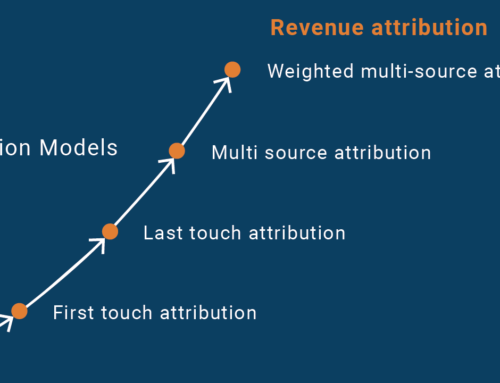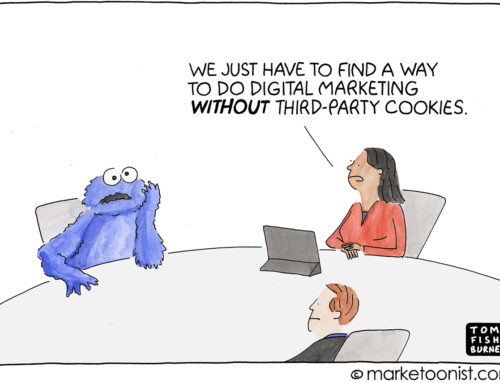If you read one book on entrepreneurship and the art of persuasion, it should be Cialdini’s classic, “Influence: The Psychology of Persuasion.” The core of his argument is simple. There are specific levers that marketers can pull on to build trust, move prospects along the buying funnel, and get them to take action. The framework has been widely adopted in the worlds of direct sales, online marketing, and copywriting. But Cialdini’s influence strategies also play an important role in conversion rate optimization testing. Let’s take a closer look at how the two are related, and what entrepreneurs need to do in order to put this theory into practice in a way that improves conversions and generates real ROI for the business.
Image source: Wikimedia
Strategies for Influence and Return on Investment (ROI)
As we’ve discussed before, the approach “always be testing” is correct, but it’s not sufficient. I’m a staunch advocate of “always be implementing structured testing.” Through structured tests, it’s possible to systematically improve your conversions at all points along the funnel with incremental improvements that compound your ROI over time. The challenge with structured testing is determining what specifically to test.
Cialdini’s framework can provide a blueprint for designing and implementing a specific testing program. We’ll examine each of Cialdini’s ideas in turn, and determine how specific tests could be conducted around each one. One final note on this approach: it’s simply one way in which a company or entrepreneur could structure its testing regimen. For many organizations that are seeking to improve conversions, they consider each of the following areas in turn. Am I using social proof? Do I create likeability for my audience? Testing enables you to determine three specific things as part of that reflective exercise:
- Is this form of influence building effective with my audience?
- Does applying this type of influence lever improve conversions in this particular case study?
- If I determine that a specific type of influence lever is helpful, which version works better? (For example, if you consider social proof which we’ll discuss below, does your audience prefer video or written testimonials?)
Each of these areas are worth examining independently, within the broader context of your influence framework, and vis-à-vis opportunities for testing.
Why Cialdini’s Ideas are Testable
“People’s ability to understand the factors that affect their behavior is surprisingly poor,” Cialdini said in an interview.
There are numerous anecdotes about Cialdini’s principles at play, with entrepreneurs crediting his approach with generating sales in the tens of thousands or even millions of dollars. But what makes the idea of influence interesting is understanding the science behind it. Studies have backed up each of the ideas that Cialdini explores, which he discusses at length in his book. For our purposes, let’s look at one related to the first principle: reciprocity. The basic idea is that people feel indebted to those who give them something.
Social scientist Randy Garner published a study about 10 years ago, where he sent out marketing surveys to a sample. Each group was a third of the total study sample. One group received surveys with handwritten sticky notes requesting they complete the survey. Another third received blank notes, and the final group just received the survey. Those who received the handwritten notes were twice as likely to respond.
Testing in Action: A Closer Look at Each of the Traits
Reciprocity
The idea behind reciprocity is easy. If you give people something, they’re much more likely to feel compelled to do what you ask. As a marketer, this could mean many things. You could give free samples, advanced previews, discounts, or high value content that entices consumers to buy from you. The different ways that you can use reciprocity to create a connection are essentially endless.
From a testing perspective, the question is simple: what will create the most value for your audience? Should you be investing in white papers and video courses to share knowledge? Or flooding potential buyers with free samples at trade shows? By developing a list of the potential types of value or gifts you can give to your prospects and then testing their effectiveness, you’ll be positioned to quickly make meaningful connections and get strangers to be positively inclined toward you.
Social Proof
Social proof plays into the idea that there’s safety in numbers. If someone is unsure of a decision that she’s going to make, she’ll look around to see what others are doing. For marketers, showing that customers are buying, using, and loving your product adds credibility. Social proof can come in numerous forms, including testimonials, reviews, celebrity endorsements, and showing social media or email subscriber numbers. Someone with happy customers and a large platform will be seen as more trustworthy than a completely unknown entity.
How should you set about testing this? One mistake that entrepreneurs make is throwing every form of social proof at the wall and hoping something sticks. While it’s smart to use every weapon in your arsenal to build your credibility, it’s important that you understand what is most effective with your audience. Should you be investing your time in producing high quality video testimonials? Working hard to drive your customers toward specific sites to leave honest, but hopefully positive reviews? Are expert level endorsements the most effective social proof in your space? These are the kinds of questions that entrepreneurs need to ask.
Commitment
People are more likely to move forward with a “yes” when they’ve already committed. As animals, human beings are wired for consistency. We like to show that our past actions had merit, and move forward with them. For marketers, this is all about the art of the small yes.
A customer that’s committed to signing up for your email list is more likely to buy. A customer that’s bought one book is easier to sell to than a new prospect. From a testing perspective, commitment and consistency are best tested by optimizing your buying funnel for a series of small yeses. The easier it is to say yes at each small juncture, the more likely you are to get the big win yes conversion you’re striving for.
Liking
We want to do business with those we know, like, and trust. How we get someone to like us depends largely on our audience – but it could range from being like them to simply giving them respect.
What we need to tap into from a testing perspective is a deep understanding of who our audience is, how they see themselves, and what resonates? Consider two diverse populations: the audience that consumes country music and could be considered big fans of the song “Red Solo Cup” and buyers of top model Mercedes cars. In some small segment there might be overlap here, but largely we’re talking about two distinct demographics. The way to appeal to each of these consumers is very different. Testing can help you uncover the critical points and the strategies for making those connections.
Authority
Authority is all about being perceived as a respected expert. People are more likely to follow the advice and requests of an authority in their space. Authority comes from business titles, degrees, wealth, publications, and a variety of other factors.
Conversions increase when your testing reveals what your audience cares most about in terms of authority. Should you be focusing on your Harvard degree, or your 30 years of experience? Would a book be more beneficial to giving you credibility, or are your followers more excited by a Ted Talk? When you are able to answer this question, you know where to invest your time and how to package your expertise in a way that’s compelling.
Scarcity
Scarcity speaks to our desire for things that are rare and special. In connection with possessing those things, we get a feeling of being rich, special, or important. Marketers play on scarcity in a number of different ways. Again, testing can reveal which approach speaks most compellingly to your audience.
For example, if you’re offering a high end seminar, there are a number of ways to demonstrate scarcity. One is simply to limit the number of seats in the program. A second is to require an application, to make the program feel exclusive and that a participant’s “acceptance” is a mark of esteem. A third is to attach a very high price tag to it, implying valuable knowledge and limited access. Yet another approach is to offer the seminar for a limited time. For example, you might only allow registration for a 24 hour period or suggest that the seminar is a one-time event. All of these can push someone’s buttons to take action if the desire is high for whatever you’re selling. A systematic testing approach can let you know what speaks to your audience.
If you’ve wanted to implement Cialdini’s techniques of persuasion in your business, but needed an extra push, connecting it to your conversion testing might be the motivation you need to get started. Remember: even the most accomplish gurus offer generalized advice. It’s up to you to customize it for your business.
Which influence tactics have you found the most valuable and how have you measured their impact on your business? Let me know in the comments below!




